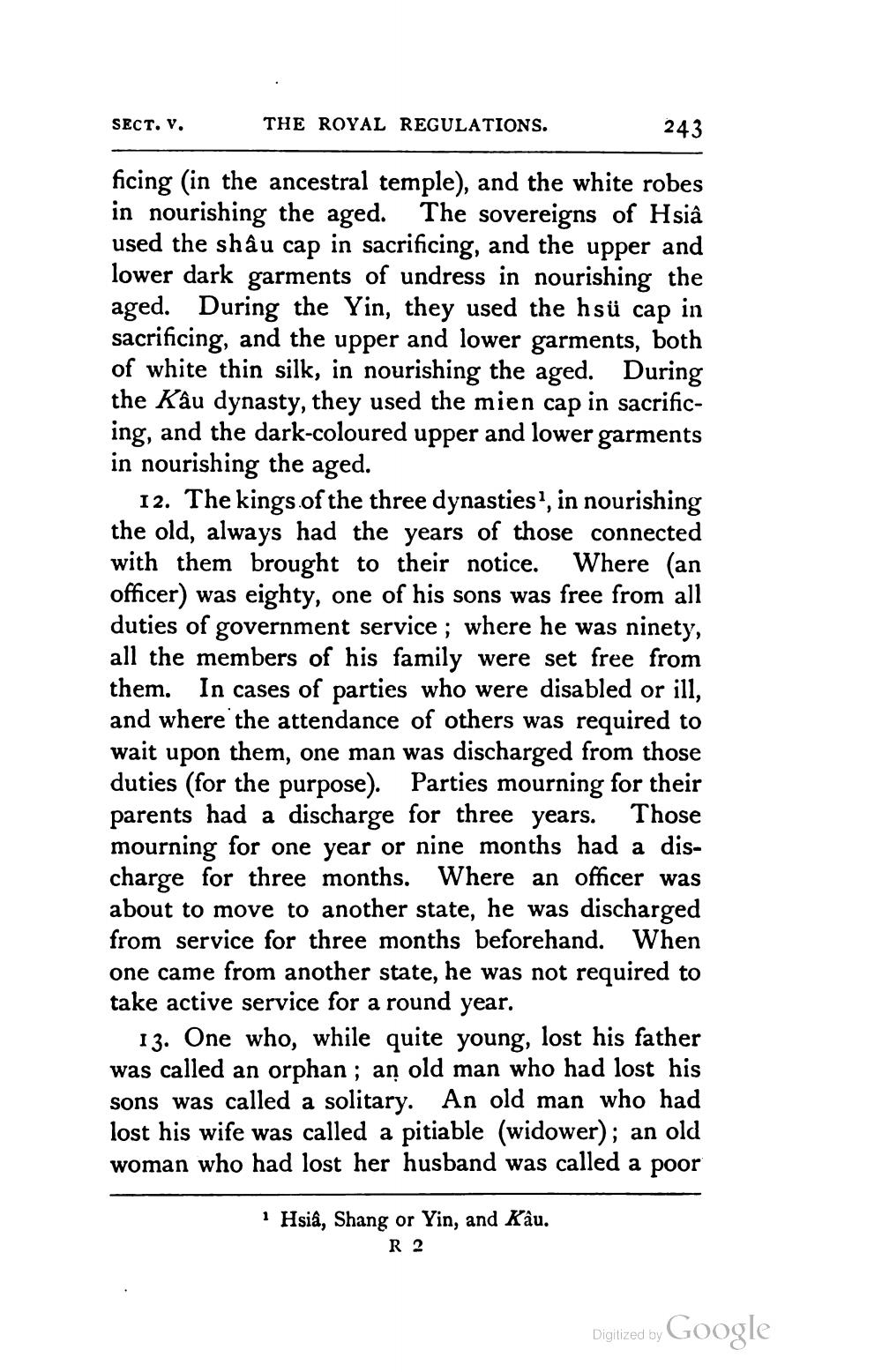________________
SECT. V.
THE ROYAL REGULATIONS.
243
ficing (in the ancestral temple), and the white robes in nourishing the aged. The sovereigns of Hsiâ used the shâu cap in sacrificing, and the upper and lower dark garments of undress in nourishing the aged. During the Yin, they used the hsü cap in sacrificing, and the upper and lower garments, both of white thin silk, in nourishing the aged. During the Kâu dynasty, they used the mien cap in sacrificing, and the dark-coloured upper and lower garments in nourishing the aged.
12. The kings of the three dynasties', in nourishing the old, always had the years of those connected with them brought to their notice. Where (an officer) was eighty, one of his sons was free from all duties of government service ; where he was ninety, all the members of his family were set free from them. In cases of parties who were disabled or ill, and where the attendance of others was required to wait upon them, one man was discharged from those duties (for the purpose). Parties mourning for their parents had a discharge for three years. Those mourning for one year or nine months had a discharge for three months. Where an officer was about to move to another state, he was discharged from service for three months beforehand. When one came from another state, he was not required to take active service for a round year.
13. One who, while quite young, lost his father was called an orphan; an old man who had lost his sons was called a solitary. An old man who had lost his wife was called a pitiable (widower); an old woman who had lost her husband was called a poor
1 Hsia, Shang or Yin, and Kâu.
R 2
Digitized by Google




